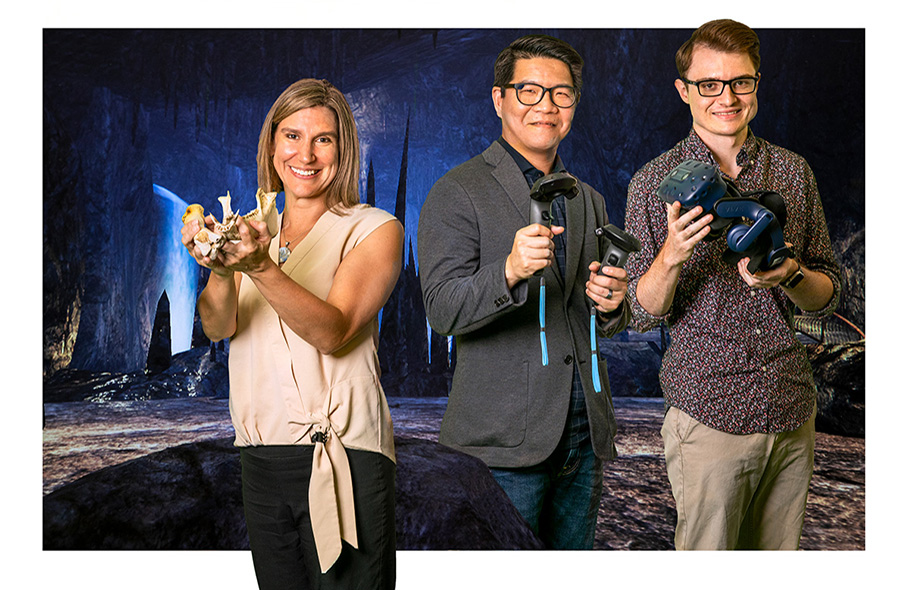Team Creates Game-based Virtual Archaeology Field School
by Diana Yates, UI News Bureau / Jan 29, 2020

Researchers, students and educators, including Education Policy, Organization & Leadership associate professor David Huang, have created Virtual Archaeology, a virtual reality laboratory that brings an in-depth archaeological field school experience to campus.
Before they can get started at their field site – a giant cave studded with stalactites, stalagmites and human artifacts – 15 undergraduate students must figure out how to use their virtual hands and tools. They also must learn to teleport.
This is ANTH 399, a course designed to bring the archaeological field school experience to undergraduate students who never leave campus. Designed by University of Illinois professors and computer science graduate students, the course satisfies the field school requirement for those pursuing an archaeology degree at Illinois.
“Field school is a requirement of most archaeological programs across the country,” said Illinois anthropology professor Laura Shackelford, who led development of the class with U. of I. Education Policy, Organization and Leadership associate professor Wenhao David Huang and computer science graduate student Cameron Merrill. “But traveling to a field school site can cost anywhere from $500 to $5,000.”
This, and the fact that traditional field school expeditions are often scheduled during breaks, makes it difficult or impossible for many students to attend – cutting them off from the study of archaeology altogether.
“This class makes it possible for many more students to get an education or explore a career in archaeology,” Shackelford said. The class is also accessible to students with physical limitations who are unable to travel to or navigate a field site.
The virtual cave is modeled in part on a real cave that was excavated in the 1930s. It contains both ancient and more recent human artifacts, all of which are accessible to students who dig in the right place.
The students learn the archaeological techniques required in any excavation. They set up a research grid on the cave floor and systematically locate and record any artifacts they find on the surface. They draw a map with all of the surface details and then decide where to excavate. They take photos of special features or finds. They dig. They collect artifacts. They conduct laboratory analyses. They keep track of their progress in a field notebook.
All of these tasks are accomplished in the virtual world.
Read the full story from the UI News Bureau...